Four
DOWNTOWN AND MAINE AVENUE

In the 1880s, the Bostonia Store and Post Office served Lakeside’s needs. As seen in this photo, it was also a meeting place for casual conversation and for hearing the latest news from neighbors and travelers.

Lakeside’s first church was organized in 1883 with 13 charter members. Worship services were conducted on the porch of the old Lakeside Inn, which was located approximately where the Lakeside Post Office now stands. In 1895, construction began on the sanctuary and the first services were held in it on February 9, 1896. The formal dedication was held on March 29, 1896.

The sanctuary, at the corner of Parkside Street and Maine Avenue, is now designated as a historical site within the Presbyterian Church. The Lakeside Historical Society took possession of the building in 1986 (Lakeside’s Centennial) and began the long process of restoration. With the efforts of the Society, and generous contributions from the community, the Olde Community Church has been restored to its original beauty and stands as an enduring landmark of Lakeside’s history.

At the corner of Maine Avenue and Sycamore Street (Lakeshore Drive) in 1898, Neal and Forney’s Lakeside Store stood on the right and the Lakeside Meat Market on the left. The large hoop in front was the Volunteer Fire Department’s emergency bell.

Mr. Neal proudly displays his general merchandise inside the Lakeside Store in 1898.

Lakeside’s Blacksmith shop was located at the north end of Maine Avenue. The two men in this picture are Wallace Phillips and Ralph Gibbs.

Above, Jim Beamer, Lakeside’s first blacksmith, stands on the left. As seen in this 1900 photo, the town blacksmith’s shop was a place for repairs of many kinds. Note the bicycles on the right and the numerous horseshoes hanging on the wall to the left.
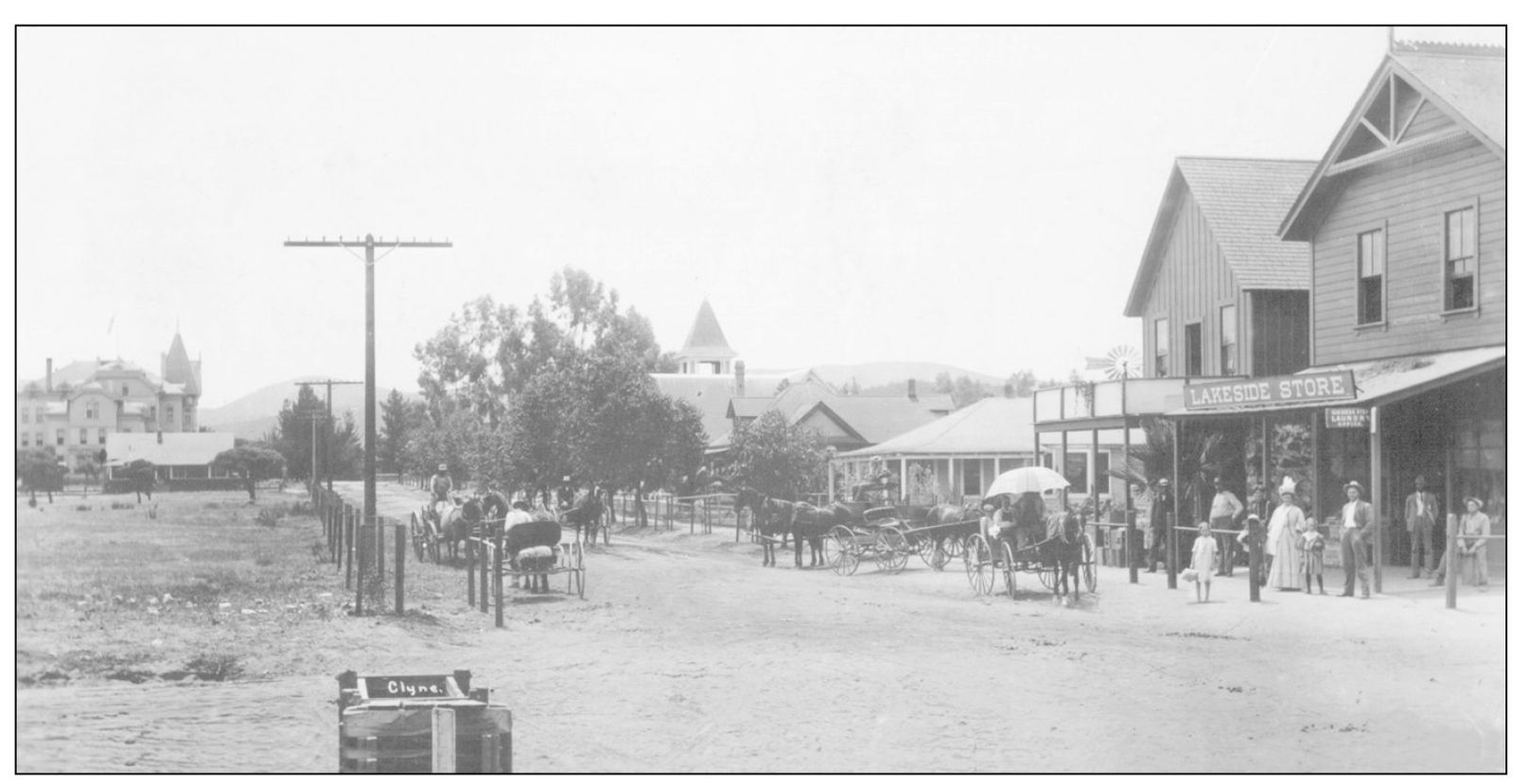
This view shows Maine Avenue looking south toward the Inn in 1904.
The Lindo Hotel was built in 1887 by Martha Swycaffer and was situated on the south side of Sycamore Street behind the Old Lakeside Store. It was started as a boarding house for construction workers on the Cuyamaca and Eastern Railroad, which extended, at that time, as far as Santee. Mrs. Swycaffer had previously run a boarding house in Santee, but moved to Lakeside in order to be more in the center of the railroad work. The right of way ended in Lakeside, but a spur line was laid to Foster. The hotel originally had four bedrooms upstairs, one large bedroom downstairs, and a kitchen and dining room.
About 1893, Mrs. Swycaffer moved the building to its present location on Sycamore and River Street. She continued to run a boarding house there for a number of years. In 1900, it was leased to the Martin family, who turned it into a grocery store and post office for approximately five years. Charles Greenleaf also used it as the headquarters for his stage line to Alpine, Descanso, and Cuyamaca.


This photo shows the Lindo Hotel in about 1910 with Mrs. Martha Swycaffer standing next to the automobile. Seated inside is her granddaughter, Mrs. Katie Leng, and Dr. J.T. Ireys, the first doctor in Lakeside.

Howard Shaff was owner of the Lakeside (Lindo) Hotel in 1944.

This was Lakeside and the surrounding valley in 1910. Lakeside’s first one-room school building, built in 1890, is in the foreground. The Cuberson house (right) was later moved to River Street. The Lakeside Inn, built in 1887 and torn down in 1920, is shown in the background. The cork elms can be seen near the center of the picture along Woodside Avenue planted Arbor Day, 1889. Originally there were 50 trees on each side of the street. Sadly, now there are none. On Main Avenue, the Community Church (1896), the former Neal house next to the church, and the store of Forney and Neal, can be seen. The home of Dr. Ivey and the Kinney house are on River Street. In the background, the majestic El Cajon (El Capitan) Mountain and Cuyamaca Peak, with a rare heavy winter’s snow-pack, can be seen.

This is a panorama looking north of the Lakeside valley with the Inn, Lindo Lake, and the racetrack in 1910. To the right of the Inn the Lakeside Community Church is visible. In the foreground is the Castle House on Orange (Castle Court).

Pictured is the Lakeside School class of 1909–10. This is Lakeside’s first school built in 1890; it burned down in 1916. Miss Jennie Moore was the principal, and Miss Mary Harney taught the primary grades.

Standing at the chalkboard of the Lakeside School classroom is Dorothy Whitaker, Mabel Newcomb, and Edward Walker.

After the Lakeside School burned in 1916, children were transferred to this building. The stucco building had been built in 1912 and housed third, fourth, and fifth grade students in one room. The sixth, seventh, and eighth grades were held in a second room. Also during this time, a tent was used at this site for one year. The first rain of the season caused the tent to leak so the children happily went home early.

For a year and a half before the Lakeview School was built in 1895, classes were held at the old adobe house on Los Coches Road owned by Julian Ames. The Lakeview School closed in 1920, and pupils then attended Lakeside District schools, or El Cajon School. The school was bought by Wellington Hoover and is still used as a residence, though it has had many owners.

This photo shows the view looking south down Maine Avenue in 1908. At the end of the block on the left is the Lakeside Inn. On the right are the Ross home, the Neal house, and the Lakeside Community Church.
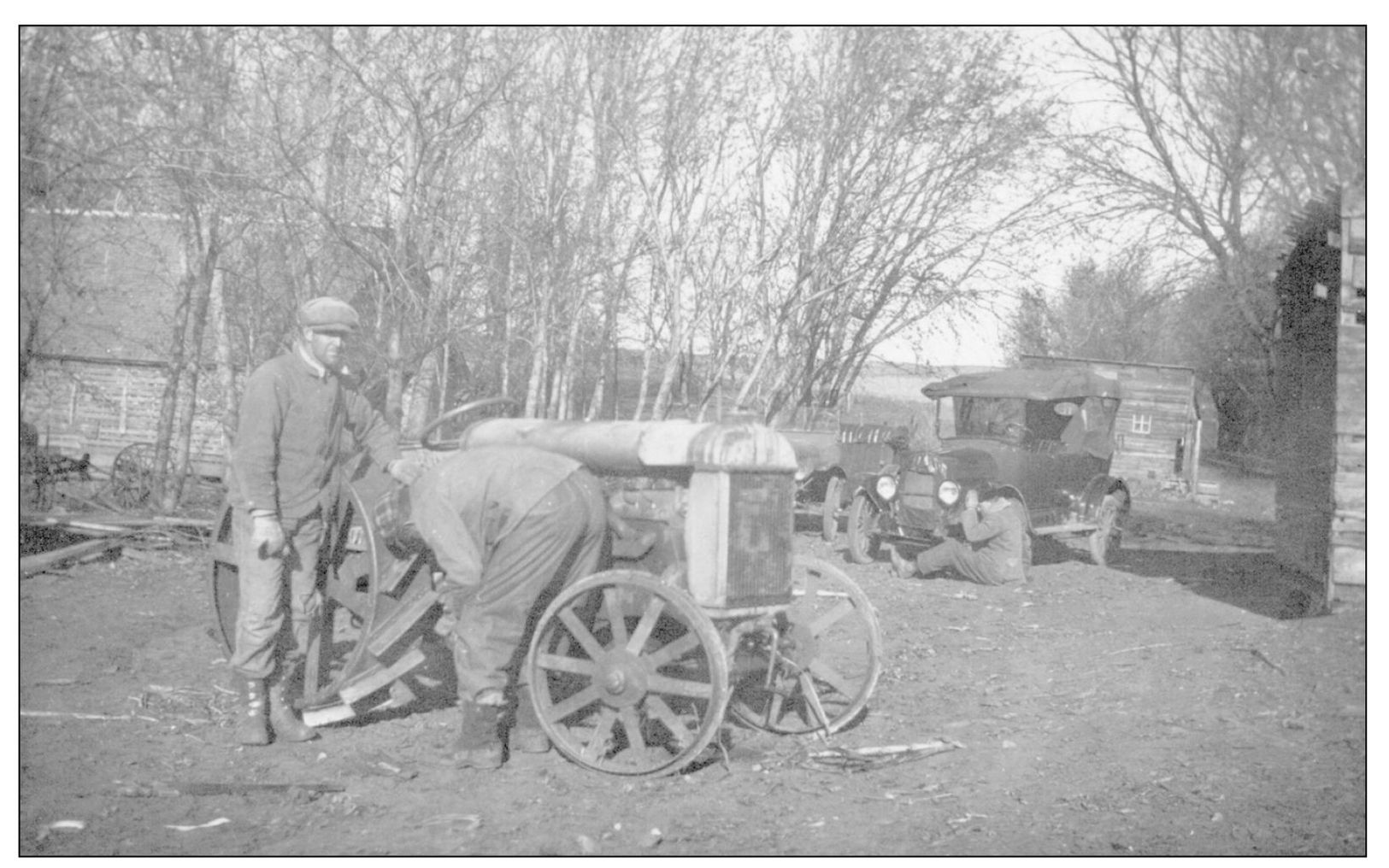
Auto and tractor repair around 1910 is pictured above.

This photo shows an early 1908 rush hour traffic-jam on Maine Avenue in front of the Lakeside Store.

Dr. Poirier’s Lakeside Pharmacy on Laurel Street is pictured above, c. 1910.

This 1909 photo shows the view looking east on Sycamore Street (Lakeshore Drive) from the corner of River Street. On the left is the Lakeside Meat Market and on the right is the Lakeside Store at the corner of Maine Avenue.

The U.S. Army Signal Corps bivouacked on Maine Avenue by the Lakeside Inn in 1911.

Army wagons were parked at the corner of Sycamore Street and Maine Avenue. The Lakeside Store can be seen in the upper left corner.

This 1912 photo shows the corner of Maine Avenue and Sycamore Street looking west. Wallace Phillip’s Blacksmith Shop is on left and J. L. Foote’s Real Estate and Insurance office on the right.

The Lakeside Store began as a narrow two-story frame building built by Will Carson in 1890 and was used as a boarding house. In 1898, J.H. Neal and Don Forney, a builder, took over the building and turned it into a General Store advertising hay, grain, produce, and general merchandise (previous page). The upper floor was used as a community dance hall. Five years later, in 1903, Klauber-Wangenheim Company bought the building and the one next to it. They joined the two to make one large square building as shown in this picture from 1912. When it opened for business, C.W. Ross was named as manager.

Pictured is John B. Rumsey’s General Merchandise on the corner of Sycamore and River Streets with a Holsum Bakery delivery in 1915.

H.S. Kibbey Lumber and Hardware had the first gas pump in Lakeside (next to the man sitting on the steps) featuring Red Crown Gasoline at 21¢ per gallon. It came into existence in 1910 at the northeast corner of Maine Avenue and Laurel Street when Mr. W.D. Hall started it. In 1914, he sold it to H.S. Kibbey. Pictured in this photo from 1917 are Harold S. Kibbey and George Miller. The identity of the man on the left is unknown.

The new entrance to Kibbey’s Lumber Yard at the west end in 1917 is shown above.

In 1930, H.S. Kibbey Lumber & Hardware included the H.S. Kibbey Union Service Station selling gas at 20¢ per gallon. This picture shows the Lakeside Union Grammar School bus (first enclosed school bus) with George Miller (purchased store in 1934), Marion Miller, Wallace Phillips, Erleen Parker, and H.S. Kibbey.

This is a view looking north on Maine Avenue from the corner of Sycamore Street in 1922. The Lakeside Commercial and Savings Bank is on the left, and the Town Hall is on the right.

This photo from the early 1920s shows the corner of Maine Avenue and Sycamore Street. The fire bell is still at its original location in the front of this picture. In the center of the photo is Dent’s Bakery, and just beyond are the bleachers for the racetrack.

Mr. Dent stands on the right, inside of his bakery on Sycamore Street. In 1918, Samuel and Susie Dent bought the bakery from the Hartungs, who had opened it in 1914. At that time, the Dent’s were also running another bakery on Magnolia Avenue in El Cajon.
A house and garage were built next to the bakery in 1925. A Mexican restaurant now occupies the old bakery building. The house and old brick oven can still be seen on Lakeshore Drive, across from Leo’s Pharmacy.

This is a view looking south at Cecil’s Cafe on the corner of Maine Avenue and Sycamore Street. This building once housed Otto Marck’s Grocery Store, later became Cecil’s first café, then Anthony Held’s Hardware and Supply Company. In 1963, Leo Ward moved into this building and it has been Leo’s Lakeside Pharmacy ever since.

This is a view of Maine Avenue looking north from 1924. On the left is the Lakeside Store and the Lakeside Commercial and Savings Bank. On the right side of the street is Hodgson’s Ice Cream, the soon to open Cecil’s Café, the Club Room for the Lakeside Woman’s Club, and behind it is Lakeside’s Town Hall.

Lakeside’s first bank, the Lakeside Commercial and Savings Bank, was organized by F.R. Bickell and was located at 10002 Maine Avenue. The building was demolished in the late 1960s. It opened to the public on April 15, 1922, with a capital of $25,000. The deposits on that day totaled $44,750. The original board consisted of C.A. Hopkins, F.R. Bickell, M.L. Ward, H.S. Kibbey, George Gibson, Harol Bacon, and Emil Klicka. Byron J. Conrad was the cashier until 1930.

This photo shows the inside the bank.

Eb’s Winter Garden Produce on Wintergardens Boulevard in the 1920s is pictured above.

This is a photo of E.L. Muse Feed Mill from the 1920s.

Here, church goers are bringing wood for the furnace of the Community Church in 1928. Pictured on the wagon are Grace Wilkinson, Ena Conger, Adeline Phoenix, Mabel Kephart, and Edna Swink.

This photo shows a street parade on Maine Avenue in the 1930s.

In 1920, after the Lakeside Store had closed, a partition was added to divide the building into two shops. On the left side, the Lakeside Farmer opened its newspaper office and print shop. And on the corner side, Robert and Onar Swearengin opened the Lakeside General Store. Later they sold their store to Anthony Held who started his Lakeside Supply Company, selling hardware and feed for livestock. He later move his business across the street. This photo shows Anthony Held holding Claudia Ann Morton in the early 1930s.
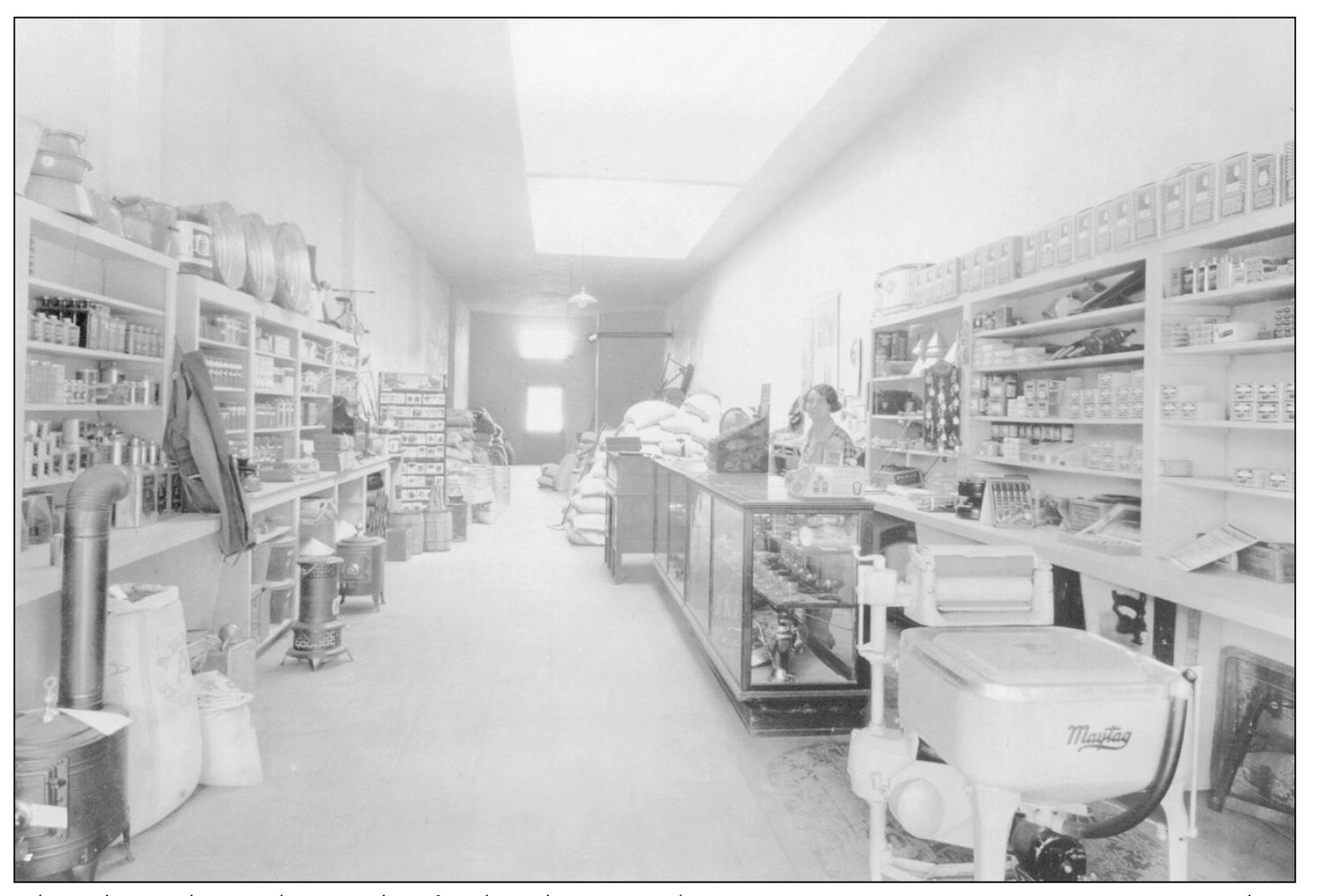
This photo shows the inside of Lakeside General Store in 1929. Onar Swearengin is standing behind the counter. They sold everything from Maytag washing machines to vegetable seeds and grain.

I.L. Blucher purchased the Park Store on the corner of Parkside Street and Maine Avenue in 1926. It contained a soda fountain, picnic supplies, and a few groceries. Mr. Blucher fixed the fountain, enlarged the grocery business, and changed the name to Blucher’s Store. Due to the Great Depression, the store was closed in 1931. The same year, Augustus and Vera Huffman purchased the store and changed the name to Park Market. They added a meat counter with I.C. Cooper as the butcher. In 1933, the store was again sold to Ben T. Reid, who operated it until 1950. Bill Koppel and Mr. Brown bought out the Reids in 1950, then later sold it to Mr. Payton for a hardware store in 1960. This building burned to the ground in 1997.

This photo shows the inside of the Park Market in 1931 with Mr. and Mrs. Huffman in the middle, and Mr. Cooper behind the new meat counter.


The new location of Cecil’s Café is now a drive-in on Woodside Avenue near Maine. This building, the old spring house, is the only structure remaining from the Lakeside Inn after its demolition in 1920—it is still with us today in part. This picture looks east at where the Inn once stood. Behind the real estate sign a small part of the Inn’s wall that was built in 1908 can be seen.

The Huffman’s bought their department store from Francis DeWeese in 1936. Ten years later, they built a larger store south of the first store on Maine Avenue. Sons, Orville and Harvey, worked with their father. In 1950, the new store was sold to Jess Shaw who renamed it The Lakeside Department Store.

La Madrid’s Lakeside Inn on Maine Avenue and Laurel Street was once the blacksmith shop operated by Tom La Madrid. It was also a shop where he built several stagecoaches (one can be seen at the right of the picture). He later converted the building into La Madrid’s Lakeside Inn. This picture from the 1930s shows Tom standing at the left with his horse.

This photo looks south across the Lakeside Lumber Yard and Lakeside towards the Los Coches valley.

This view northbound on Maine Avenue in 1938 shows John A. Rocchio’s first Lakeside Pharmacy offering fountain lunches. Further down the street is the recently added Safeway store.

Lorenz Gandyra’s Lakeside Harness and Shoe Shop was located at Maine and Laurel. The Gandyras came from South Dakota in 1911. He built his home and a Harness Shop in front—the home is still there. Posing for this picture are Clifford, Lorenz, and little Mary Catherine Gandyra.

Hank Long’s Texaco Service Station on the corner of Woodside and Maine Avenue is pictured here in the 1940s. Originally this station was owned and operated by Otto Einer.

In this 1947 view of Maine Street, Anthony Held’s new store is now on the east side of the street. On the right side, where he first opened his supply company in the old Lakeside Store building, is now Miller’s Market. Next to Miller’s, construction is underway for a new set of storefronts that are still in use today.

Anthony R. Held & Sons Lakeside Supply Company moved to the southeast corner of Main Avenue and Sycamore Street in the 1940s, and remained there until 1963 when Leo Ward purchased it for his pharmacy.

This beautiful archway of Cork Elms at the west entrance to Lakeside is believed to be the only lane of these huge old trees in the U.S. The trees had been imported from Australia by the El Cajon Land Company and were planted on Arbor Day of 1893 by the pupils of the first school in Lakeside. This picture was taken in the 1940s at the corner of Woodside Avenue and Channel Road looking east.

Originally there were over 50 elm trees on each side of Woodside Avenue, but on February 6, 1956, the trees began to fall in the name of progress. Seven of these beautiful old shade trees were cut down from the south side for an entrance to a proposed shopping center. Flossie Beadle was so strongly opposed to the destruction of these trees, that she took her shotgun in arms to protest their removal. But her efforts were in vain, and today there is not a single tree left to justify the name of Woodside Avenue.

Pictured above are the Lakeside Community Church and the Lake Café on the corner of Maine Avenue and Parkside Street in the 1940s. Behind the gas truck the Lakeside Roll of Honor can be seen.

The Lakeside Roll of Honor displayed the names of those who served in the Armed Forces during World War II.

In 1929, Otis Barker began wholesaling fruits and vegetables from this store at San Vicente Road and State Highway 67 and operating produce trucks. From that, he worked into the grocery business.
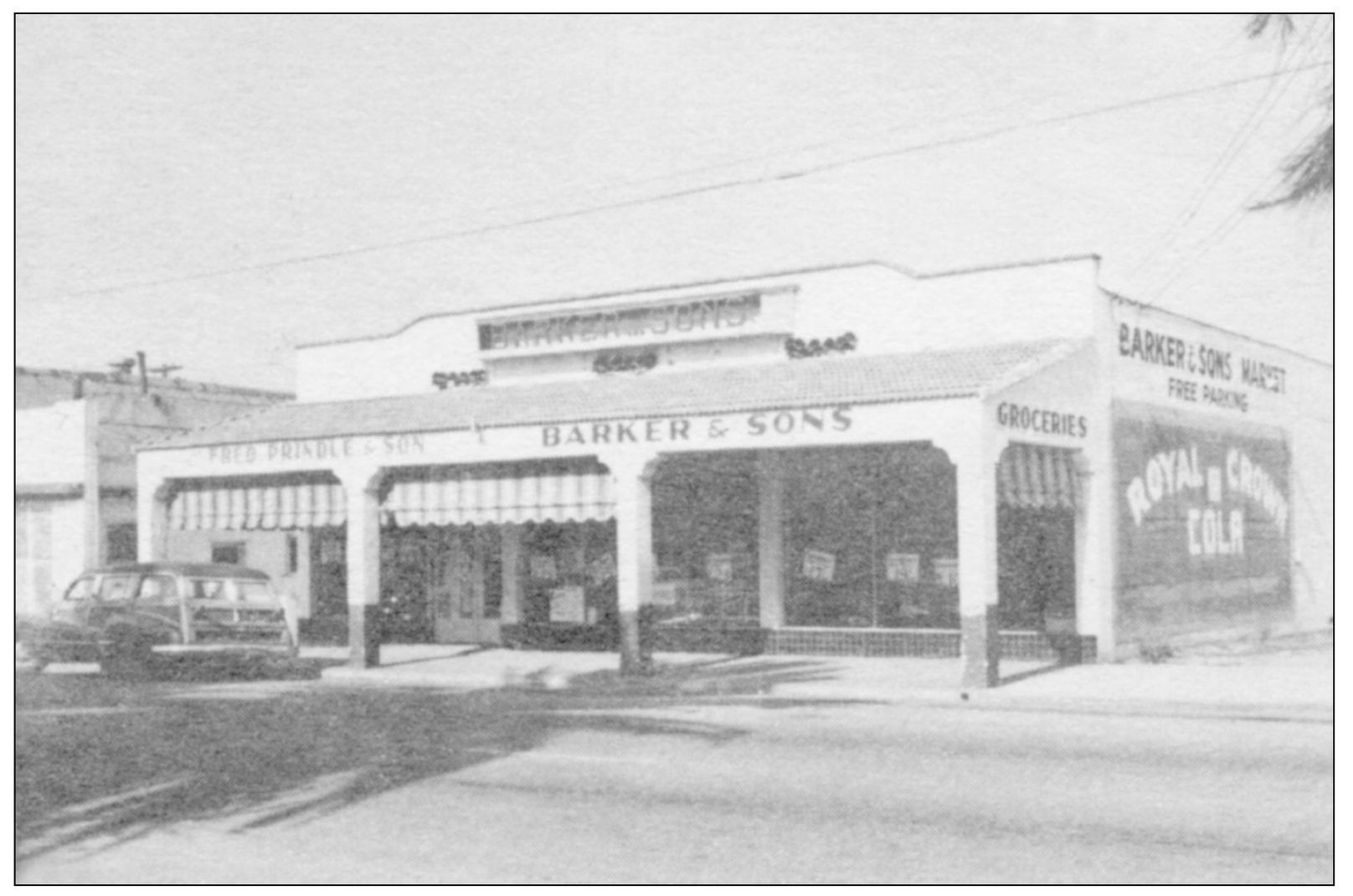
When Otto Marcks died in 1953, Otis Barker moved into his store on Maine Avenue. Three years later he moved again to the Allied Food Store (originally Safeway) just a few doors to the south. Fred Prindle took over the meat department. The name of the market was changed to Barker and Sons, and Prindle and Son.

Formerly Kibbey’s Lakeside Lumber Yard on the corner of Maine and Laurel in 1950, it is now Lakeside Builders Store “Of Course.”

In this photo, Tom La Madrid is working in his Blacksmith’s shop on Laurel Street in the 1950s. “I knew Tom La Madrid rather well as my blacksmith and as a friend. He worked on many of the old Butterfield Stage Coaches to restore them to perfection and had them in many parades, including the Historical Days parades in San Diego. He also restored the old covered wagons, for the same purpose, and did beautiful wrought iron work for many people who wanted it for decoration or purposeful gateways, etc. Tom and his wife lived on the corner behind the Lakeside Hotel (old Lindo Hotel). Tom had a son by the name of Fred, who is now also deceased. Tom was a hard, constant worker who couldn’t stand laziness and would easily say so!”—Sr. Anna Mary Meyer.

Next door to Cecil Carender’s “Cecil’s Restaurant,” Cecil opened a Sporting Goods store near to the corner of Woodside and Maine Avenues.

This picture looking north from the front of Cecil’s Sporting Goods was taken on the same day as the one above, June 30, 1951. Long’s Texaco Service Station is on the corner.

This view is looking north up Maine Avenue in 1951. On the right is Kibbey & Scott Real Estate and Insurance, Lakeside Arcade, Park Market, Lakeside Feed Store, Lakeside Café, Huffmans Department Store, Barker and Sons Grocery, Held’s Lakeside Supply Company, Rocchio’s Lakeside Pharmacy, and at the end is the Lakeside Theater (in the old Town Hall).
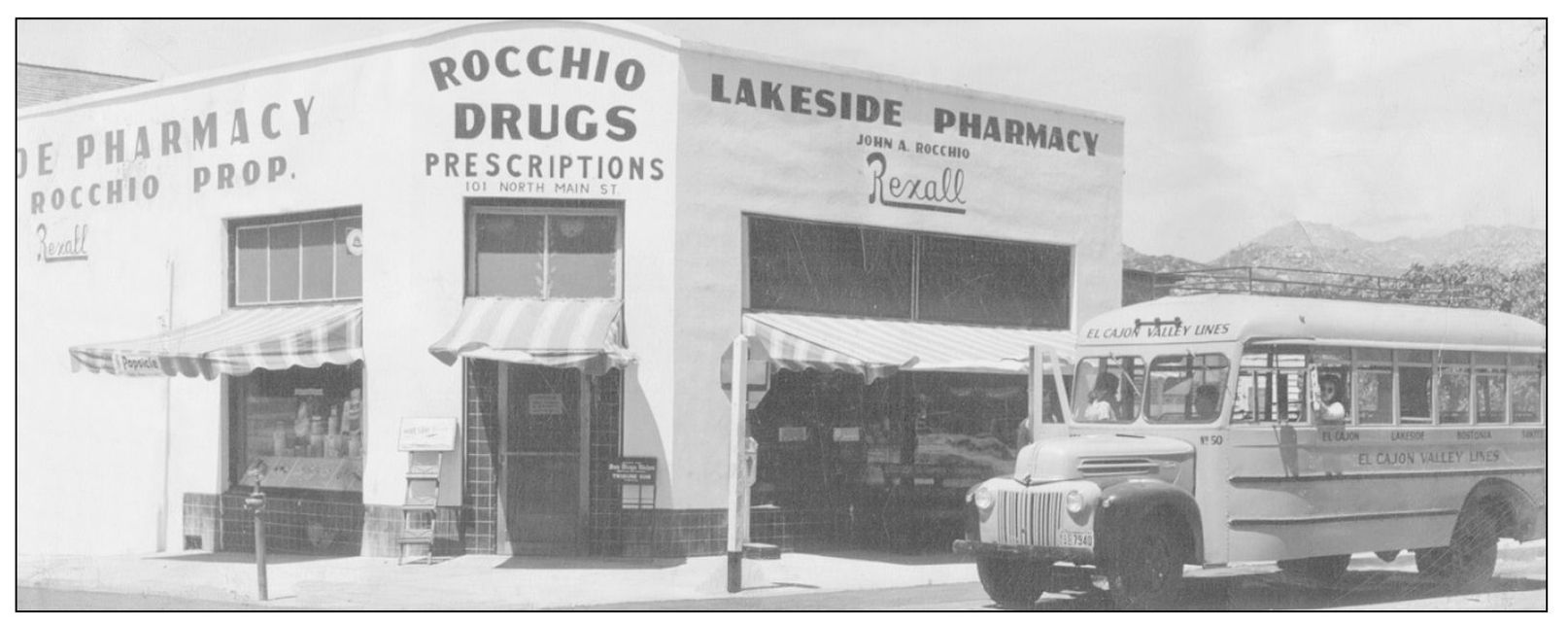
This building, at 101 N. Maine Avenue, was the Club Room for the Lakeside Woman’s Club from 1920 until they sold it to John A. Rocchio in 1945. He remodeled the building into a very modern drug store. Leo Ward bought out Rocchio in October of 1960. Leo then moved across the street in 1963. This 1950 picture shows an El Cajon Valley Lines transit bus.

This image from March of 1951 shows the west side of Maine Avenue looking north. The shops are Burn’s Beauty Salon, Watkins Bake-Sweet Shop, Lakeside Appliances, Sutton Cleaners, Sam and Katie’s Lakeside Liquor, M & H Market (originally the Lakeside Store), and the Valley Commercial Bank of El Cajon and Lakeside on the corner of Lakeshore Drive.

Watkins Bake-Sweet Shop opened in August of 1947 as a bakery, fountain, and candy store. Bob Watkins became famous for his fruitcake, which was shipped all over the U.S. His mailorder business became so successful that he had to set up his own mailroom in the back of the store. As seen in this photo from the 1950s, this was a favorite gathering place for people of all ages. The bakery was closed in 1962.